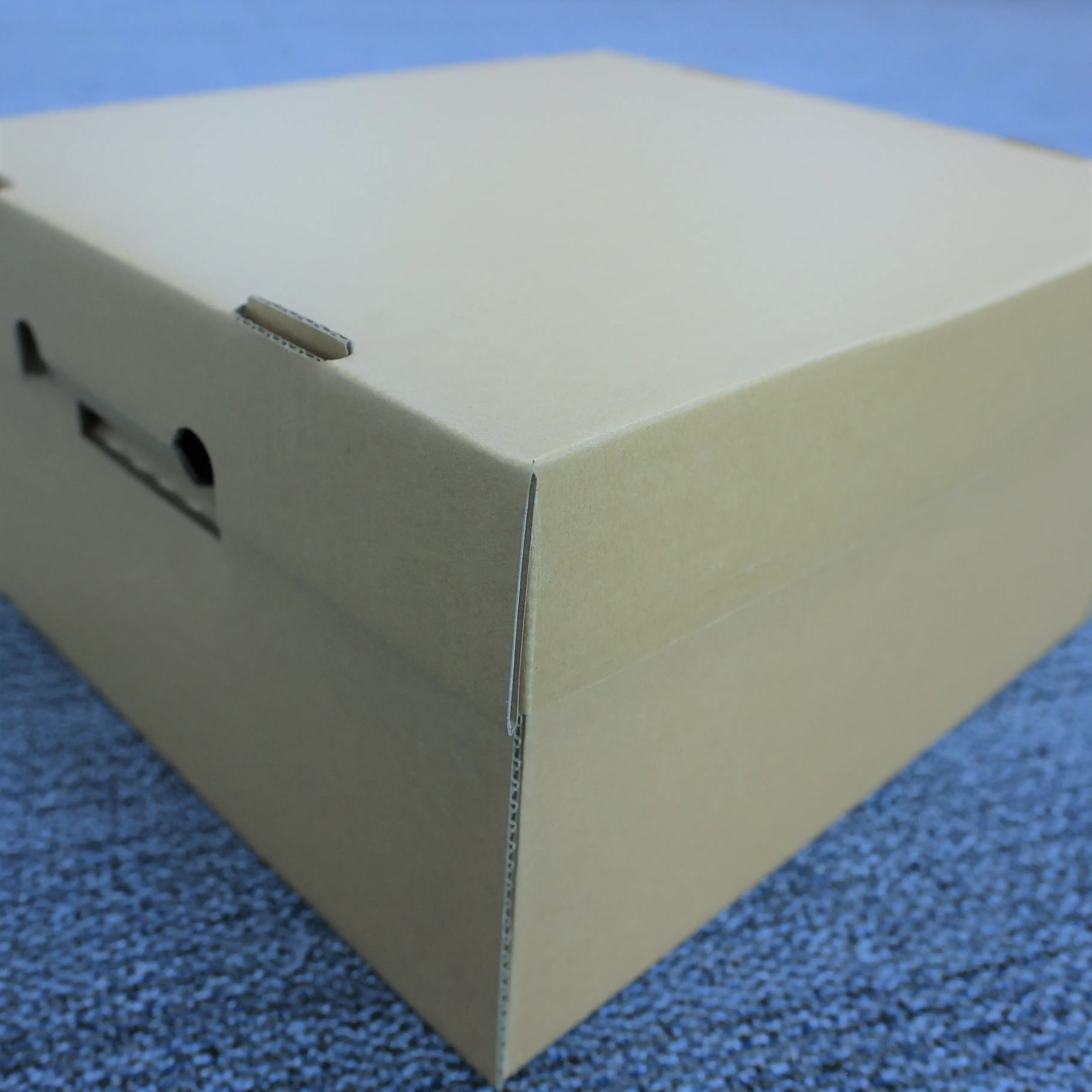Understanding Wax Coated Boxes and Key Quality Metrics
What Are Wax Coated Boxes and Why Quality Matters
Wax coated boxes make great specialty packaging because they have either paraffin or plant-based wax added to them, which helps block out moisture. They work really well for things that go bad easily such as fish products, fresh produce, and medicine when shipped through cold storage chains. The temperature range here typically runs from around 14 degrees Fahrenheit up to about 50 F (that's roughly -10 Celsius to 10 C). A recent look at the packaging sector back in 2023 showed something interesting: nearly a quarter of all losses in cold chain shipping happened because the boxes got wet inside or just couldn't hold their shape under weight. Getting the wax right on these boxes stops the cardboard layers from peeling apart, but also lets some air circulate so there isn't too much dampness building up inside the package.
Key Performance Indicators for Wax Coated Boxes
Three metrics determine wax box reliability:
- Barrier Integrity: Measured through water vapor transmission rate (WVTR) tests, with high-performing boxes maintaining <5 g/m²/day under ASTM F1249 standards.
- Compression Strength: Wax coating must retain ≥85% of the original corrugated board’s load-bearing capacity, as verified through compression testing protocols developed by packaging engineers.
- Edge Crush Resistance: Even a 0.5 mm wax layer variation can alter edge crush strength (ECT) by ±15%, directly impacting stackability during palletization.
Manufacturers balancing these KPIs reduce supply chain failures by 34% compared to untested alternatives, according to 2024 cold-chain logistics data.
Evaluating Barrier Properties: Moisture, Grease, and Vapor Resistance
Testing Moisture Resistance in Wax Coated Boxes
Wax coated boxes prevent liquid ingress through hydrophobic paraffin layers. Laboratories assess moisture resistance by subjecting boxes to spray tests (per ASTM D726) and submersion trials at varying humidity levels. A 2023 study found boxes retaining structural integrity after 48-hour exposure to 90% relative humidity demonstrated <4% water absorption.
Assessing Grease and Oil Barrier Effectiveness
| Test Method | Performance Threshold | Failure Indicator |
|---|---|---|
| Kit Test (TAPPI T 448) | ≥120 seconds | Visible grease penetration |
| Pressure Application | 15 psi sustained | Coating delamination or leakage |
These evaluations ensure boxes protect contents like meat or lubricants without compromising material stability.
Measuring Water Vapor Transmission Rates (WVTR)
WVTR quantifies moisture vapor permeability through coatings, critical for cold chain packaging. Modern labs use infrared sensors to measure values below 5 g/m²/day – a key threshold for perishables. Boxes exceeding 10 g/m²/day risk condensation-induced label damage during 14-day shipments.
Industry Standards for Barrier Performance (ASTM D726, TAPPI T 448)
Compliance with ASTM D726 ensures boxes withstand 24-hour water exposure without fiber saturation. Third-party certification requires passing TAPPI T 448’s grease resistance protocol, with leading manufacturers achieving 98% first-pass rates in 2024 audits. These benchmarks eliminate 73% of packaging failures in temperature-sensitive logistics.
Mechanical Strength Testing: Edge Crush and Compression Performance
Conducting Edge Crush Testing (TAPPI T 811) for Wax Coated Boxes
The Edge Crush Test (ECT), which follows standards from TAPPI T 811, basically checks how much weight a box can handle vertically before it collapses. The test works by squeezing those fluted edges of wax coated boxes until they give way under pressure. What makes this important is that it simulates what happens when boxes are stacked on pallets during transportation across country. The numbers we get from these tests, usually expressed in pounds per inch, tell us exactly how heavy something can be placed on top before damage occurs. Recent research back in 2023 looked at different strengths of corrugated boards and discovered something interesting. Boxes rated at 44 ECT managed to hold up against weights exceeding 3,500 pounds during four hour stacking experiments. These kinds of specs make such boxes particularly well suited for all sorts of industrial shipping applications where durability matters most.
Impact of Wax Coating on Edge Crush Strength
Wax coatings improve rigidity by filling microscopic gaps in corrugated fibers. This reduces edge deformation under stress by 18–22% compared to untreated boxes (Industry Physics 2023), particularly in humid environments where moisture weakens untreated cardboard.
Compression Strength Testing Under Load Conditions
ASTM D642 compression tests apply sustained pressure to wax coated boxes in humidity-controlled chambers (60–90% RH). Facilities simulate 30-day warehouse conditions to identify load thresholds—critical for pharmaceuticals requiring stable stacking at ≥85% humidity.
Interpreting ECT and Compression Results for Supply Chain Durability
| Metric | Acceptable Range | High-Risk Scenario Solution |
|---|---|---|
| ECT Rating | ≥32 lb/in | Double-wall construction |
| Compression | ≥200 lb/in² | Add pallet supports |
| Results below these thresholds often necessitate design adjustments for cold-chain or heavy machinery logistics. |
Real-World Durability and Environmental Performance Testing
Drop Test and Vibration Analysis for Real-World Simulation
When testing wax coated boxes, they're dropped from about 1.2 meters high to mimic what happens during shipping. Industry data suggests around 95% of these packages stay intact even after being dropped 10 times. For vibration testing, manufacturers use equipment that follows TAPPI standards to recreate the kinds of shakes and bumps boxes experience on trucks and planes. Boxes get subjected to vibrations ranging from 4 to 200 Hz for anywhere between one and three hours straight. Studies have found that wax coatings actually cut down on surface wear by roughly 35% when compared to regular boxes without any coating during those vibration tests. This makes a real difference in how well packages hold up through their journey from factory to customer.
Long-Term Storage and Environmental Exposure Trials
Tests that speed up the aging process can mimic what happens during 6 to 12 months of actual storage conditions. These tests typically involve cycling through extreme humidity levels from 20% to 90% relative humidity alongside temperature swings ranging between minus 20 degrees Celsius and 50 degrees Celsius in controlled chambers. Recent research from 2023 looked at wax coated packaging boxes kept in tropical environments showed something interesting: around 89 percent still held together structurally after nine months on the shelf, which is actually 22 percentage points better than those lined with polyethylene. When it comes to keeping things frozen, wax coatings have proven themselves too. Studies show they stop ice crystals from getting inside even at temperatures as low as negative thirty degrees Celsius, all while letting less than half a percent of water vapor escape through the material.
Balancing Wax Thickness and Breathability in Practical Applications
Optimal wax coatings range from 20–40 g/m², achieving:
- Moisture Resistance: Blocks 99.9% liquid water at 40 g/m² thickness
-
Breathability: Permits 15–25 g/m²/24hr water vapor transmission for humidity control
Food-grade applications prioritize thinner coatings (20–25 g/m²) to comply with FDA 21 CFR 176.170 standards while maintaining grease resistance. Automotive parts packaging uses heavier coatings (35–40 g/m²) to withstand oil exposure without compromising box compression strength (≥ 200 lbs ECT).
Laboratory Testing and Compliance with Industry Standards
Selecting Accredited Lab Testing Services for Wax Coated Boxes
For anyone looking at wax coated boxes, working with labs that have ISO/IEC 17025:2017 accreditation makes all the difference when it comes to getting reliable test results and proper calibration. What does this standard actually mean? Well, basically it means these facilities stick to strict quality control procedures and demonstrate real technical know-how. Don't just go with any lab though. Focus on those that specialize specifically in packaging materials because these places will understand the ins and outs of ASTM and TAPPI testing protocols that matter most for wax coatings. Their experience with moisture resistance tests and compression strength evaluations is exactly what's needed to get accurate readings that reflect how these boxes will perform in actual storage conditions.
Common Analytical Methods: FTIR, DSC, and Coating Thickness Gauges
Three techniques dominate wax coating analysis:
- Fourier-Transform Infrared Spectroscopy (FTIR): Identifies chemical composition shifts caused by environmental exposure
- Differential Scanning Calorimetry (DSC): Measures thermal stability under temperature fluctuations during storage
- Coating thickness gauges (micrometer or ultrasonic) verify wax layer uniformity across box surfaces, critical for barrier consistency
Certification and Compliance with FDA, ISO, and ISTA Standards
Wax coated boxes for food packaging require FDA 21 CFR 175.300 compliance for indirect food contact. International shipments often mandate ISTA Series 3B vibration testing and ISO 22000 food safety protocols. Laboratories provide audit-ready documentation for these certifications, streamlining approvals for regulated industries.
FAQ
What are wax coated boxes used for?
Wax coated boxes are primarily used for packaging items that are sensitive to moisture such as fresh produce, fish products, and pharmaceuticals, especially when they are shipped through cold storage chains.
How do wax coatings benefit wax coated boxes?
Wax coatings protect the boxes from moisture and improve rigidity, preventing the layers of cardboard from peeling apart. They also reduce stress deformation, enhancing durability during transport and storage.
How is the effectiveness of wax coated boxes measured?
The effectiveness is measured using key performance indicators such as barrier integrity, compression strength, and edge crush resistance.
Are there industry standards for wax coated boxes?
Yes, compliance with standards such as ASTM D726 and TAPPI T 448 is critical in ensuring that wax coated boxes meet industry benchmarks for barrier performance and mechanical strength.
Do wax coated boxes have environmental benefits?
Yes, wax coated boxes reduce supply chain failures, which in turn minimizes wastage and enhances packaging efficiency. They also provide effective protection against moisture and external conditions over long-term storage periods.
Table of Contents
- Understanding Wax Coated Boxes and Key Quality Metrics
- Evaluating Barrier Properties: Moisture, Grease, and Vapor Resistance
- Mechanical Strength Testing: Edge Crush and Compression Performance
- Real-World Durability and Environmental Performance Testing
- Laboratory Testing and Compliance with Industry Standards
- FAQ


